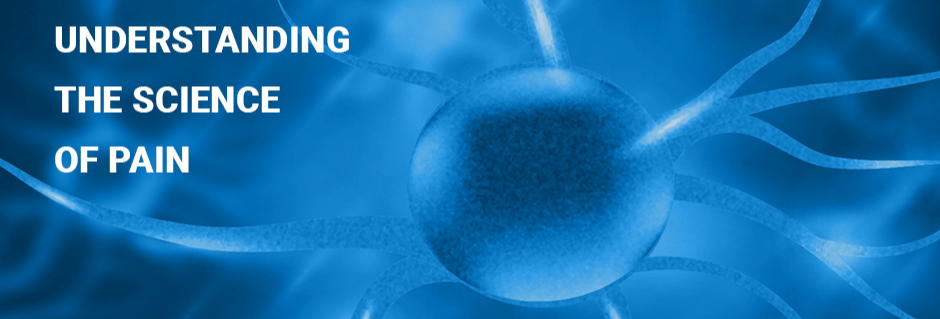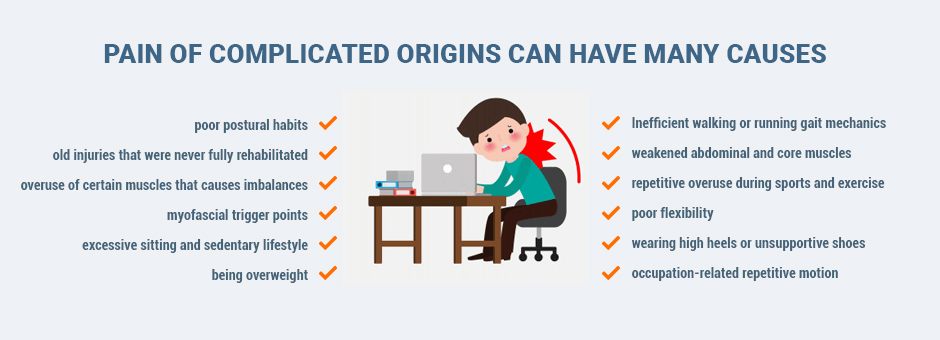For most of us, pain is a somewhat abstract concept. Its quality and characteristics are highly subjective, making it impossible to quantify. Perception of pain is comparative, and subject to the past experiences of the individual. Given an identical injury, an athlete who endures intense training and experiences many injuries is not likely to have the same perception of pain as a sedentary person who has never experienced trauma. What the couch potato perceives as intense pan may be interpreted as mild discomfort by the athlete.
New research into the science of pain is helping the scientific community to better understand its mechanisms, and how they impact individuals.
In a sense, pain is all in your head, since it is interpreted by your brain. But that does not make it any less real. Pain is your body’s way of alerting your brain that something is wrong, and it sets into motion a cascade of chemical responses to protect and heal injured tissues.
There are three basic subcategories of pain:
- Nociceptive pain: This type of pain arises from damage to the tissues themselves, ranging from a stubbed toe to serious trauma. Nerves in the surrounding area send signals to your brain to alert it to danger in the area where the damage occurred. It is your body’s 911 system, triggering a cascade of hormonal responses to stop further damage and promote healing. Nociceptive pain often changes with body position, load and movement.
- Neuropathic pain: Neuropathic pain arises from the nerves themselves when they become injured, compressed or entrapped. The pain you feel when you hit your funny bone is an example of neuropathic pain. Sciatic pain is also neuropathic. It can sting, burn, tingle, throb or just plain hurt.
- Nonspecific centralized pain: This category of pain is more difficult to define. Pain is perceived by your brain, with no apparent physical cause. Fibromyalgia is an example of a nonspecific pain syndrome. In many cases, low back pain is nonspecific in nature and cannot be explained by MRI. It is interesting to note that many patients with confirmed structural damage to the lumbar spine have no pain symptoms at all.
Pain can stem from any one of the three subcategories, or it can be a combination of some or all. Inflammation from a strained muscle can exert pressure on a nerve, combining nociceptive pain with neuropathic pain. The same injury can hyper-sensitize pain receptors, adding nonspecific pain to the mix.
In some instances, pain can persist after damaged tissues have healed. This is due to sensitization, a lowering of your pain threshold that causes the sensation of pain to linger. In such cases, you may need to retrain your brain to raise the pain threshold and change its perception of pain.
Ironically, understanding the underlying source of pain can help you cope with and even control it. For example, pain can trigger your sympathetic nervous system to go into “fight or flight” mode, causing tension in your major muscles and inhibiting your stabilizers. You can neutralize your response with diaphragmatic breathing that activates your parasympathetic nervous system, putting you in “rest and digest” mode so your tissues can heal.
Pain arises when your brain perceives tissue damage to be a threat. You can experience serious tissue damage with little or no pain, or minor damage that seems excruciating. Pain is all perceptual, and your expectations and emotional state can heighten or suppress it. Basically, if you think an injury is going to hurt, you’re right!
In response to injury, your body produces its own endogenous painkiller chemicals, called endorphins, enkephlins, and seratonin. Scientists have discovered that the production of natural pain-suppressing substances correlates directly with your emotional state, with positive emotions stimulating a higher release. Two people with an identical injury can experience different levels of pain, depending on their emotional state.
Sometimes, pain in one area of your body is caused by something going on elsewhere. In other words, there is no actual damage at the locus of pain. Pain alone does not always provide a reliable picture of what is really going on. This creates a conundrum for conventional medical practitioners, who are restricted by insurance providers from venturing beyond the area of complaint.
Pain of complicated origins can have many causes:
- poor postural habits
- old injuries that were never fully rehabilitated
- overuse of certain muscles that causes imbalances
- myofascial trigger points
- excessive sitting and sedentary lifestyle
- being overweight
- Inefficient walking or running gait mechanics
- weakened abdominal and core muscles
- repetitive overuse during sports and exercise
- poor flexibility
- wearing high heels or unsupportive shoes
- occupation-related repetitive motion
Oftentimes, chronic pain is caused by a combination of issues. Treating the pain itself will not get to the root of the problem. If you want to eliminate pain for good, you need an accurate diagnosis and an individualized treatment plan.
It is important to seek treatment from a specialist who understands pain science, and who recognizes the interconnected nature of the musculoskeletal system, and how injuries or imbalances one area of the body can cause pain in other regions.
Whether you have an acute injury or a nagging pain that won’t go away, accurate diagnosis is key to treatment and recovery. The rehab team at NYDNR understands how pain can manifest in different ways in different patients. We use advanced technologies and innovative treatment approaches to get to the source of your pain and eliminate it for good. Contact us today, and put your pain behind you so you can move forward and live your best life.



























































